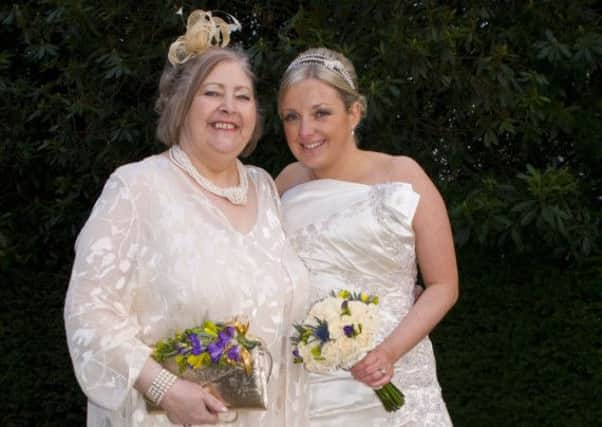Breast cancer death rate lowest for 100 years


Professor Peter Boyle, director of the University of Strathclyde’s Institute of Global Public Health, said advances in treatment and screening for breast cancer had helped drive down deaths in recent years.
But he said Scotland, along with many other countries, still faced challenges in addressing differences in survival linked to social deprivation.
Advertisement
Hide AdAdvertisement
Hide AdProf Boyle is due to speak at the European Breast Cancer Conference currently taking place in Glasgow, with experts from around the world meeting to discuss the latest research.
The most recent figures show that more than 1,000 women die each year in Scotland from breast cancer, but the rate of deaths has fallen by 17 per cent in the past decade.
Prof Boyle said that, in fact, the evidence showed death rates were down to their lowest level in Scotland in more than 100 years. He said deaths hit a peak between 1975 and 1985, at around 27 per 100,000 women, dropping in more recent years to 17 per 100,000, which was lower than a century ago.
“This positive situation has been brought about by contributions from a variety of sources, including the development and availability of effective treatments, increased awareness, the national NHS breast screening programme, and free access for all women to high-quality diagnostic and treatment facilities,” he said.
“While this is very positive, not all women worldwide have been able to benefit from these advances and the contrast between the situation in rich and poor countries is staggering.”
Prof Boyle said that, even in Scotland, there were considerable differences in death rates due to lifestyle and social class.
He pointed to one previous study which showed that in Glasgow, two women with breast cancer of the same age, seeking the same treatment at the same time, and with the same type of tumour, may have a ten-point percentage difference in five-year survival because one comes from an affluent area of the city and the other from a deprived area.
Prof Boyle said eliminating these differences was a matter of urgency. “We need to make a reduction in the number of women developing and dying from breast cancer a global priority,” he added.
Advertisement
Hide AdAdvertisement
Hide AdPreviously published figures show that while deaths from breast cancer have been falling in Scotland, it still lags behind other European countries in survival one year after diagnosis.
Radiotherapy increases the chances of survival
Giving radiotherapy to women whose breast cancer has spread only slightly, significantly reduces their chances of dying, research shows, writes Lyndsay Buckland.
A study by researchers in Oxford found that women whose cancer had spread to just a few of the lymph nodes under the arm were less likely to have the disease return, or to die, if they had the radiation treatment after their mastectomy.
Researcher Dr Paul McGale told the European Breast Cancer Conference in Glasgow that until now there had been uncertainty about whether women with early breast cancer which had spread to one, two or three nodes gained any benefit from radiotherapy after surgery.
But the findings showed recurrence dropped by 32 per cent and deaths by 20 per cent in those given radiotherapy compared to those who were not.
Lung Cancer rates doubled
Lung cancer rates in women have almost doubled over the past 40 years in Scotland.
Cancer Research UK said that while rates of the disease for women had jumped by 97 per cent in this period, they have fallen by 40 per cent in men.
It wants to change the way the public and researchers think about lung cancer, and to increase early detection. Each year around 5,100 people are diagnosed in Scotland and some 4,200 people die annually.
Advertisement
Hide AdAdvertisement
Hide AdAcross Britain, smoking levels for men have fallen since the 1950s but rates for women did not start to fall until the 1970s.Rates of the disease reflect this, with lung cancer in men beginning to fall in the late 1970s while the rates in women have continued to climb.
Claire Cameron, who lost her mother, Jane Liddell, to lung cancer in 2012, said: “Mum was ill for such a long time and we had to push her to go back to the doctor as she was one of those people who didn’t want to waste her doctor’s time.
“No one suspected lung cancer – mum wasn’t a smoker.”